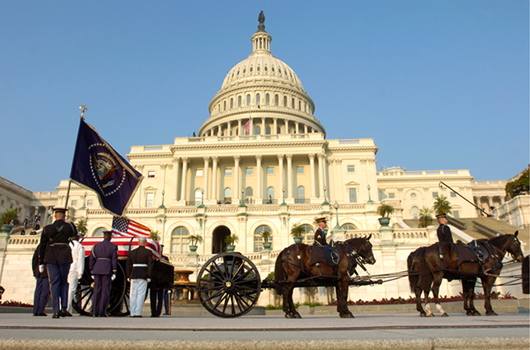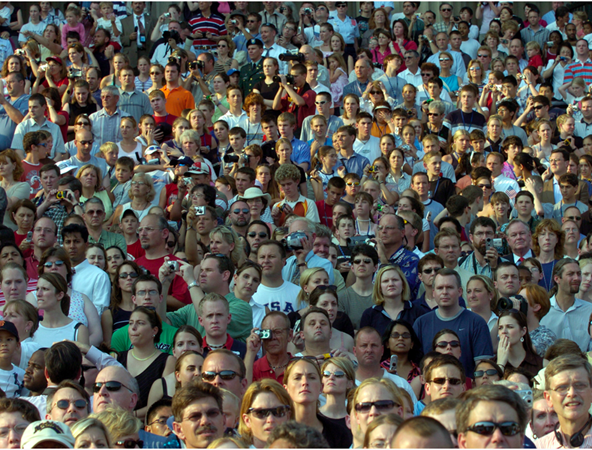By the spring of 2004, Ronald Reagan’s health had declined significantly. As his life was nearing its end, Nancy Reagan was where she had been for more than fifty years—at her husband’s side, taking care of him. On the morning of June 5, 2004, just as she had done every day for the past several years, she sat next to her husband’s bedside, talking softly and keeping him company. His eyes were closed and his breathing had slowed. Just before slipping away, he opened his blue eyes and looked straight at Nancy. She kissed him and told him that was the greatest gift he could have given her. He closed them for the last time and was gone.
From the moment his passing was officially announced, the outpouring of emotion was overwhelming. From every corner of the world—the grandest palaces to the most modest homes—came tributes and tears. It seemed that Ronald Reagan had touched everyone.
His flag-draped casket was first placed in repose at the Ronald Reagan Presidential Library and Museum in Simi Valley, California, where tens of thousands came to pay their respects. Then it was on to Washington. More than one hundred thousand people filed past his casket in the Capitol Rotunda, with thousands more lined up along the funeral route. The state funeral at Washington’s National Cathedral on June 11 drew current and former heads of state from around the world, as well as family, friends, former staffers, and even some former political foes. He was eulogized by Margaret Thatcher, Brian Mulroney, and both then-President George W. Bush and former President George H. W. Bush. Few eyes were dry as a military honor guard escorted their former commander in chief out of the cathedral for his final trip home. Back in California, after a touching sunset service at the Presidential Library and Museum, Ronald Reagan was laid to rest in the burial site he had helped design.
On it was inscribed the words by which he chose to be remembered: “I know in my heart that man is good, that what is right will always eventually triumph, and that there is purpose and worth to each and every life.”
Ronald Reagan was not afraid of death. He spoke often of his faith, that there is a better place to which man goes, and told family and friends he was looking forward to that when his time came.
For him, it now had come.

After proceeding down Constitution Avenue, the horse-drawn caisson bearing the casket of former President Reagan completes its journey at the base of the U.S. Capitol steps, 2004.
The Ronald Reagan Presidential Foundation

The horse-drawn caisson processional down Constitution Avenue to the Capitol, Washington, D.C., 2004.
The Ronald Reagan Presidential Foundation

A large crowd watching the funeral procession, Washington, D.C., 2004.
The Ronald Reagan Presidential Foundation

Former President Ronald Reagan lying in state in the U.S. Capitol Rotunda, 2004.
The Ronald Reagan Presidential Foundation